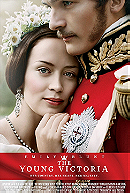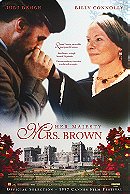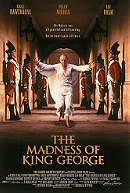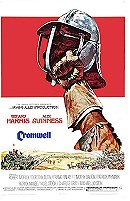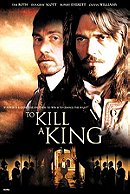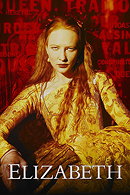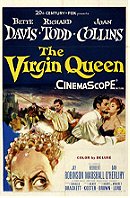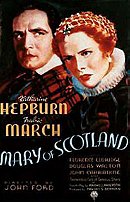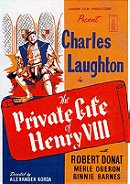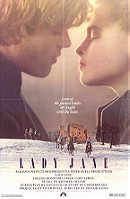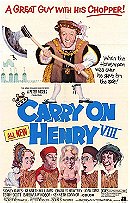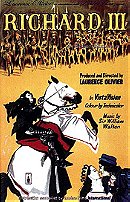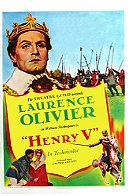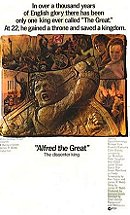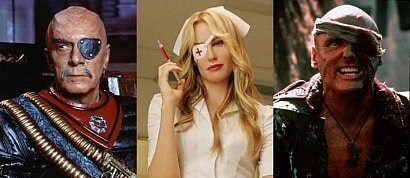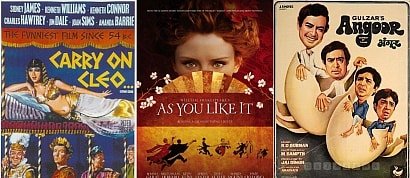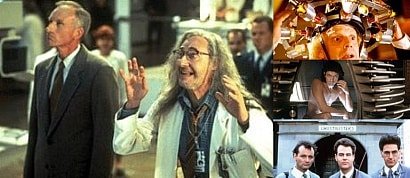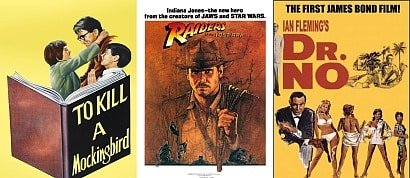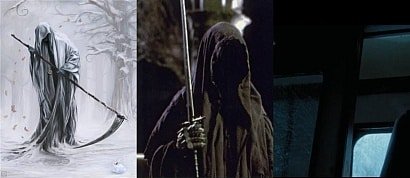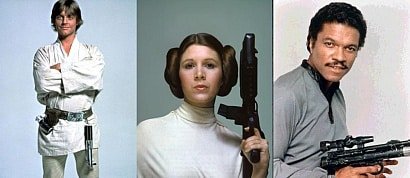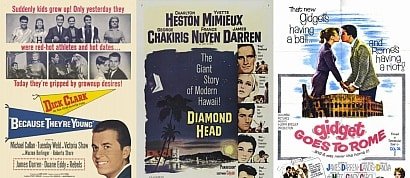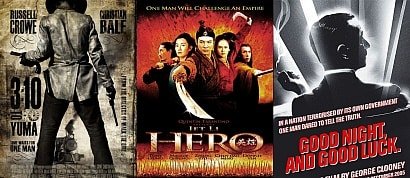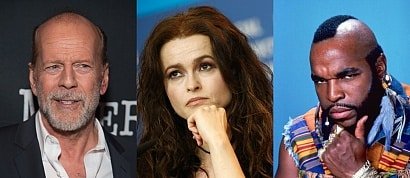One is most amused
Sort by:
Showing 18 items
Decade:
Rating:
List Type:
Elizabeth Alexandra Mary (Elizabeth II)
21 April 1926-Present
Her Majesty is the queen regnant of sixteen independent states known as the Commonwealth realms: the United Kingdom of Great Britain and Northern Ireland, Canada, Australia, New Zealand, Jamaica, Barbados, the Bahamas, Grenada, Papua New Guinea, the Solomon Islands, Tuvalu, Saint Lucia, Saint Vincent and the Grenadines, Belize, Antigua and Barbuda, and Saint Kitts and Nevis. All together, these countries have a combined population, including dependencies, of over 129 million. She holds each crown separately and equally in a shared monarchy, and carries out duties in and on behalf of all the states of which she is sovereign. She is also Head of the Commonwealth, Supreme Governor of the Church of England, Duke of Normandy, Lord of Mann, and Paramount Chief of Fiji. In theory her powers are vast; however, in practice, and in accordance with convention, she rarely intervenes in political matters.
Her long reign has seen sweeping changes, including the dissolution of the British Empire (a process that began before her accession) and the consequent evolution of the modern Commonwealth of Nations. Elizabeth became Queen of the United Kingdom, Canada, Australia, New Zealand, South Africa, Pakistan, and Ceylon (now Sri Lanka) upon the death of her father, George VI, on 6 February 1952. As other British colonies gained independence from the United Kingdom, she became queen of several newly independent countries. During her 57 years on the throne, she has been the sovereign of 32 individual nations, but half of them subsequently became republics.
21 April 1926-Present
Her Majesty is the queen regnant of sixteen independent states known as the Commonwealth realms: the United Kingdom of Great Britain and Northern Ireland, Canada, Australia, New Zealand, Jamaica, Barbados, the Bahamas, Grenada, Papua New Guinea, the Solomon Islands, Tuvalu, Saint Lucia, Saint Vincent and the Grenadines, Belize, Antigua and Barbuda, and Saint Kitts and Nevis. All together, these countries have a combined population, including dependencies, of over 129 million. She holds each crown separately and equally in a shared monarchy, and carries out duties in and on behalf of all the states of which she is sovereign. She is also Head of the Commonwealth, Supreme Governor of the Church of England, Duke of Normandy, Lord of Mann, and Paramount Chief of Fiji. In theory her powers are vast; however, in practice, and in accordance with convention, she rarely intervenes in political matters.
Her long reign has seen sweeping changes, including the dissolution of the British Empire (a process that began before her accession) and the consequent evolution of the modern Commonwealth of Nations. Elizabeth became Queen of the United Kingdom, Canada, Australia, New Zealand, South Africa, Pakistan, and Ceylon (now Sri Lanka) upon the death of her father, George VI, on 6 February 1952. As other British colonies gained independence from the United Kingdom, she became queen of several newly independent countries. During her 57 years on the throne, she has been the sovereign of 32 individual nations, but half of them subsequently became republics.
Nonfictionguy's rating:


The King's Speech (2010)
King George V
14 December 1895 – 6 February 1952
George VI (Albert Frederick Arthur George); ) was King of the United Kingdom and the Dominions of the British Commonwealth from 11 December 1936 until his death. He was the last Emperor of India (until 22 June 1948), the last King of Ireland (until 18 April 1949), and the first Head of the Commonwealth.
As the second son of King George V, he was not expected to inherit the throne and spent his early life in the shadow of his elder brother, Edward. He served in the Royal Navy during World War I, and after the war took on the usual round of public engagements. He married Lady Elizabeth Bowes-Lyon in 1923, and they had two daughters, Elizabeth (who succeeded him as Queen Elizabeth II) and Margaret.
14 December 1895 – 6 February 1952
George VI (Albert Frederick Arthur George); ) was King of the United Kingdom and the Dominions of the British Commonwealth from 11 December 1936 until his death. He was the last Emperor of India (until 22 June 1948), the last King of Ireland (until 18 April 1949), and the first Head of the Commonwealth.
As the second son of King George V, he was not expected to inherit the throne and spent his early life in the shadow of his elder brother, Edward. He served in the Royal Navy during World War I, and after the war took on the usual round of public engagements. He married Lady Elizabeth Bowes-Lyon in 1923, and they had two daughters, Elizabeth (who succeeded him as Queen Elizabeth II) and Margaret.
Nonfictionguy's rating:


The Young Victoria (2009)
Alexandrina Victoria
24 May 1819 – 22 January 1901
Queen Victoria was from 20 June 1837 the Queen of the United Kingdom of Great Britain and Ireland and from 1 May 1876 the first Empress of India of the British Raj until her death. Her reign as the Queen lasted 63 years and seven months, longer than that of any other British monarch before her. The period centred on her reign is known as the Victorian era, a time of industrial, political, and military progress within the United Kingdom.
Queen Victoria, who was of almost entirely German descent, was the daughter of Prince Edward Augustus Duke of Kent and Princess Victoria of Saxe-Coburg-Saalfeld, and granddaughter of George III and the niece of her predecessor William IV. She arranged marriages for her nine children and forty-two grandchildren across the continent, tying Europe together; this earned her the nickname "the grandmother of Europe". She was the last British monarch of the House of Hanover; her son King Edward VII belonged to the House of Saxe-Coburg and Gotha.
24 May 1819 – 22 January 1901
Queen Victoria was from 20 June 1837 the Queen of the United Kingdom of Great Britain and Ireland and from 1 May 1876 the first Empress of India of the British Raj until her death. Her reign as the Queen lasted 63 years and seven months, longer than that of any other British monarch before her. The period centred on her reign is known as the Victorian era, a time of industrial, political, and military progress within the United Kingdom.
Queen Victoria, who was of almost entirely German descent, was the daughter of Prince Edward Augustus Duke of Kent and Princess Victoria of Saxe-Coburg-Saalfeld, and granddaughter of George III and the niece of her predecessor William IV. She arranged marriages for her nine children and forty-two grandchildren across the continent, tying Europe together; this earned her the nickname "the grandmother of Europe". She was the last British monarch of the House of Hanover; her son King Edward VII belonged to the House of Saxe-Coburg and Gotha.
Mrs. Brown (1997)
Refer to Alexandrina Victoria
This film covers the period of Queen Victoria's life after Prince Alberts death.
This film covers the period of Queen Victoria's life after Prince Alberts death.
Nonfictionguy's rating:


The Madness of King George (1994)
George III (George William Frederick
4 June 1738 – 29 January 1820
King of Great Britain and King of Ireland from 25 October 1760 until the union of these two countries on 1 January 1801, after which he was King of the United Kingdom of Great Britain and Ireland until his death. He was concurrently Duke of Brunswick-Lüneburg and prince-elector of Hanover in the Holy Roman Empire until his promotion to King of Hanover on 12 October 1814. He was the third British monarch of the House of Hanover, but unlike his two predecessors he was born in Britain and spoke English as his first language. Despite his long life, he never visited Hanover.
George III's long reign was marked by a series of military conflicts involving his kingdoms, much of the rest of Europe, and places further afield in Africa, the Americas and Asia. Early in his reign, Great Britain defeated France in the Seven Years' War, becoming the dominant European power in North America and India. However, many of its American colonies were soon lost in the American Revolutionary War, which led to the establishment of the United States. A series of wars against revolutionary and Napoleonic France, over a twenty-year period, finally concluded in the defeat of Napoleon in 1815.
In the latter half of his life, George III suffered from recurrent and, eventually, permanent mental illness. Medical practitioners were baffled by this at the time, although it has since been suggested that he suffered from the blood disease porphyria. After a final relapse in 1810, a regency was established, and George III's eldest son, George, Prince of Wales, ruled as Prince Regent. On George III's death, the Prince Regent succeeded his father as George
Trivia: Movie was going to be called George III but there were fears that the american markets would ignore the movie, thinking they already missed George I & George II.
4 June 1738 – 29 January 1820
King of Great Britain and King of Ireland from 25 October 1760 until the union of these two countries on 1 January 1801, after which he was King of the United Kingdom of Great Britain and Ireland until his death. He was concurrently Duke of Brunswick-Lüneburg and prince-elector of Hanover in the Holy Roman Empire until his promotion to King of Hanover on 12 October 1814. He was the third British monarch of the House of Hanover, but unlike his two predecessors he was born in Britain and spoke English as his first language. Despite his long life, he never visited Hanover.
George III's long reign was marked by a series of military conflicts involving his kingdoms, much of the rest of Europe, and places further afield in Africa, the Americas and Asia. Early in his reign, Great Britain defeated France in the Seven Years' War, becoming the dominant European power in North America and India. However, many of its American colonies were soon lost in the American Revolutionary War, which led to the establishment of the United States. A series of wars against revolutionary and Napoleonic France, over a twenty-year period, finally concluded in the defeat of Napoleon in 1815.
In the latter half of his life, George III suffered from recurrent and, eventually, permanent mental illness. Medical practitioners were baffled by this at the time, although it has since been suggested that he suffered from the blood disease porphyria. After a final relapse in 1810, a regency was established, and George III's eldest son, George, Prince of Wales, ruled as Prince Regent. On George III's death, the Prince Regent succeeded his father as George
Trivia: Movie was going to be called George III but there were fears that the american markets would ignore the movie, thinking they already missed George I & George II.
Nonfictionguy's rating:


Cromwell (1970)
King Charles I
19 November 1600 – 30 January 1649
King of England, Scotland and Ireland from 27 March 1625 until his execution on 30 January 1649. Charles famously engaged in a struggle for power with the Parliament of England. He was an advocate of the Divine Right of Kings, which was the belief that kings received their power from God. This Divine right of Kings could not be taken away (unlike the similar Mandate of Heaven), even if he was stripped of his power. Many subjects of England feared that he was attempting to gain absolute power. Many of his actions, particularly the levying of taxes without Parliament's consent, caused widespread opposition.
Religious conflicts permeated Charles's reign. He married a Catholic princess, Henrietta Maria of France, over the objections of Parliament and public opinion. He further allied himself with controversial religious figures, including the ecclesiastic Richard Montagu and William Laud, whom Charles appointed Archbishop of Canterbury. Many of Charles's subjects felt this brought the Church of England too close to Roman Catholicism. Charles's later attempts to force religious reforms upon Scotland led to the Bishops' Wars that weakened England's government and helped precipitate his downfall.
His last years were marked by the English Civil War, in which he was opposed by the forces of the English and Scottish Parliaments, which challenged his attempts to augment his own power, and by Puritans, who were hostile to his religious policies and supposed Catholic sympathies. Charles was defeated in the First Civil War (1642–45), after which Parliament expected him to accept demands for a constitutional monarchy. He instead remained defiant by attempting to forge an alliance with Scotland and escaping to the Isle of Wight. This provoked a Second Civil War (1648–49) and a second defeat for Charles, who was subsequently captured, tried, convicted, and executed for high treason. The monarchy was then abolished and a republic called the Commonwealth of England, also referred to as the Cromwellian Interregnum, was declared. Charles's son, Charles II, became King after the restoration of the monarchy in 1660. In that same year, Charles I was canonized by the Church of England
19 November 1600 – 30 January 1649
King of England, Scotland and Ireland from 27 March 1625 until his execution on 30 January 1649. Charles famously engaged in a struggle for power with the Parliament of England. He was an advocate of the Divine Right of Kings, which was the belief that kings received their power from God. This Divine right of Kings could not be taken away (unlike the similar Mandate of Heaven), even if he was stripped of his power. Many subjects of England feared that he was attempting to gain absolute power. Many of his actions, particularly the levying of taxes without Parliament's consent, caused widespread opposition.
Religious conflicts permeated Charles's reign. He married a Catholic princess, Henrietta Maria of France, over the objections of Parliament and public opinion. He further allied himself with controversial religious figures, including the ecclesiastic Richard Montagu and William Laud, whom Charles appointed Archbishop of Canterbury. Many of Charles's subjects felt this brought the Church of England too close to Roman Catholicism. Charles's later attempts to force religious reforms upon Scotland led to the Bishops' Wars that weakened England's government and helped precipitate his downfall.
His last years were marked by the English Civil War, in which he was opposed by the forces of the English and Scottish Parliaments, which challenged his attempts to augment his own power, and by Puritans, who were hostile to his religious policies and supposed Catholic sympathies. Charles was defeated in the First Civil War (1642–45), after which Parliament expected him to accept demands for a constitutional monarchy. He instead remained defiant by attempting to forge an alliance with Scotland and escaping to the Isle of Wight. This provoked a Second Civil War (1648–49) and a second defeat for Charles, who was subsequently captured, tried, convicted, and executed for high treason. The monarchy was then abolished and a republic called the Commonwealth of England, also referred to as the Cromwellian Interregnum, was declared. Charles's son, Charles II, became King after the restoration of the monarchy in 1660. In that same year, Charles I was canonized by the Church of England
Nonfictionguy's rating:


To Kill a King (2003)
Oliver Cromwell
April 25, 1599, died September 3, 1658
Oliver was an English military and political leader best known for his involvement in making England into a republican Commonwealth and for his later role as Lord Protector of England, Scotland, and Ireland. He was one of the commanders of the New Model Army which defeated the royalists in the English Civil War. After the execution of King Charles I in 1649, Cromwell dominated the short-lived Commonwealth of England, conquered Ireland and Scotland, and ruled as Lord Protector from 1653 until his death in 1658.
April 25, 1599, died September 3, 1658
Oliver was an English military and political leader best known for his involvement in making England into a republican Commonwealth and for his later role as Lord Protector of England, Scotland, and Ireland. He was one of the commanders of the New Model Army which defeated the royalists in the English Civil War. After the execution of King Charles I in 1649, Cromwell dominated the short-lived Commonwealth of England, conquered Ireland and Scotland, and ruled as Lord Protector from 1653 until his death in 1658.
Elizabeth: The Golden Age (2007)
Elizabeth I
7 September 1533 – 24 March 1603
Elizabeth was Queen of England and Queen of Ireland from 17 November 1558 until her death. Sometimes called The Virgin Queen, Gloriana, or Good Queen Bess, Elizabeth was the fifth and last monarch of the Tudor dynasty. The daughter of Henry VIII, she was born a princess, but her mother, Anne Boleyn, was executed three years after her birth, and Elizabeth was declared illegitimate. Her brother, Edward VI, cut her out of the succession. His will, however, was set aside, and in 1558 Elizabeth succeeded her half-sister, the Catholic Mary, during whose reign she had been imprisoned for nearly a year on suspicion of supporting Protestant rebels.
Elizabeth set out to rule by good counsel and she depended heavily on a group of trusted advisers led by William Cecil, Baron Burghley. One of her first moves as queen was to support the establishment of an English Protestant church, of which she became the Supreme Governor. This Elizabethan Religious Settlement held firm throughout her reign and later evolved into today's Church of England. It was expected that Elizabeth would marry, but despite several petitions from parliament, she never did. The reasons for this choice are unknown, and they have been much debated. As she grew older, Elizabeth became famous for her virginity, and a cult grew up around her which was celebrated in the portraits, pageants and literature of the day.
7 September 1533 – 24 March 1603
Elizabeth was Queen of England and Queen of Ireland from 17 November 1558 until her death. Sometimes called The Virgin Queen, Gloriana, or Good Queen Bess, Elizabeth was the fifth and last monarch of the Tudor dynasty. The daughter of Henry VIII, she was born a princess, but her mother, Anne Boleyn, was executed three years after her birth, and Elizabeth was declared illegitimate. Her brother, Edward VI, cut her out of the succession. His will, however, was set aside, and in 1558 Elizabeth succeeded her half-sister, the Catholic Mary, during whose reign she had been imprisoned for nearly a year on suspicion of supporting Protestant rebels.
Elizabeth set out to rule by good counsel and she depended heavily on a group of trusted advisers led by William Cecil, Baron Burghley. One of her first moves as queen was to support the establishment of an English Protestant church, of which she became the Supreme Governor. This Elizabethan Religious Settlement held firm throughout her reign and later evolved into today's Church of England. It was expected that Elizabeth would marry, but despite several petitions from parliament, she never did. The reasons for this choice are unknown, and they have been much debated. As she grew older, Elizabeth became famous for her virginity, and a cult grew up around her which was celebrated in the portraits, pageants and literature of the day.
Mary of Scotland (1936)
Mary I (Mary, Queen of Scots)
8 December 1542 – 8 February 1587
Mary was Queen of Scots from 14 December 1542 to 24 July 1567.
She was the only surviving legitimate child of King James V. She was six days old when her father died and made her Queen of Scots. Her mother, Mary of Guise, assumed regency and her daughter was crowned nine months later.
In 1558, she married Francis, Dauphin of France, who ascended the French throne as Francis II in 1559. However, Mary was not Queen of France for long; she was widowed by December 1560.Soon after her husband's death, Mary returned to Scotland, arriving in Leith on 19 August 1561. Four years later, Mary remarried, choosing her first cousin, Henry Stuart, Lord Darnley, as her second husband. Their union was not happy and following the birth of their son, James, on 19 June 1566, a plot was hatched to remove Darnley. In February 1567, an explosion occurred in the house at Kirk o'Field, and Darnley was found dead in the garden.
She soon married James Hepburn, 4th Earl of Bothwell - today, it is believed that she was forced into marriage. Mary was imprisoned in Loch Leven Castle on 15 June and forced to abdicate the throne in favour of her one-year-old son. After an unsuccessful attempt to regain the throne, Mary fled to England seeking protection from her father's first cousin, Queen Elizabeth I, whose kingdom she was to inherit. Elizabeth I, however, ordered her arrest, because of threat of being deposed by Mary, who was considered the rightful ruler of England by English Catholics.
After a long period of custody in England, she was tried and executed for treason following her alleged involvement in three plots to assassinate Elizabeth I of England and place herself on the English throne.
8 December 1542 – 8 February 1587
Mary was Queen of Scots from 14 December 1542 to 24 July 1567.
She was the only surviving legitimate child of King James V. She was six days old when her father died and made her Queen of Scots. Her mother, Mary of Guise, assumed regency and her daughter was crowned nine months later.
In 1558, she married Francis, Dauphin of France, who ascended the French throne as Francis II in 1559. However, Mary was not Queen of France for long; she was widowed by December 1560.Soon after her husband's death, Mary returned to Scotland, arriving in Leith on 19 August 1561. Four years later, Mary remarried, choosing her first cousin, Henry Stuart, Lord Darnley, as her second husband. Their union was not happy and following the birth of their son, James, on 19 June 1566, a plot was hatched to remove Darnley. In February 1567, an explosion occurred in the house at Kirk o'Field, and Darnley was found dead in the garden.
She soon married James Hepburn, 4th Earl of Bothwell - today, it is believed that she was forced into marriage. Mary was imprisoned in Loch Leven Castle on 15 June and forced to abdicate the throne in favour of her one-year-old son. After an unsuccessful attempt to regain the throne, Mary fled to England seeking protection from her father's first cousin, Queen Elizabeth I, whose kingdom she was to inherit. Elizabeth I, however, ordered her arrest, because of threat of being deposed by Mary, who was considered the rightful ruler of England by English Catholics.
After a long period of custody in England, she was tried and executed for treason following her alleged involvement in three plots to assassinate Elizabeth I of England and place herself on the English throne.
Henry VIII
June 1491 – 28 January 1547
King of England from 21 April 1509 until his death. He was also Lord of Ireland (later King of Ireland) and claimant to the Kingdom of France. Henry was the second monarch of the House of Tudor, succeeding his father, Henry VII. Henry VIII was a significant figure in the history of the English monarchy. Although in the great part of his reign he brutally suppressed the Protestant reformation of the church, a movement having roots with John Wycliffe of the 14th century, he is more popularly known for his political struggles with Rome. These struggles ultimately led to his separating the Anglican church from the Roman hierarchy, the Dissolution of the Monasteries, and establishing himself as the Supreme Head of the Church of England. Although some claim he became a Protestant on his death-bed, he advocated Catholic ceremony and doctrine throughout his life. Royal backing of the English Reformation was left to his heirs, the devout Edward VI and the renowned Elizabeth I, whilst daughter Mary I temporarily reinstated papal authority over England. Henry also oversaw the legal union of England and Wales (see Laws in Wales Acts 1535–1542). He is noted for his six marriages.
June 1491 – 28 January 1547
King of England from 21 April 1509 until his death. He was also Lord of Ireland (later King of Ireland) and claimant to the Kingdom of France. Henry was the second monarch of the House of Tudor, succeeding his father, Henry VII. Henry VIII was a significant figure in the history of the English monarchy. Although in the great part of his reign he brutally suppressed the Protestant reformation of the church, a movement having roots with John Wycliffe of the 14th century, he is more popularly known for his political struggles with Rome. These struggles ultimately led to his separating the Anglican church from the Roman hierarchy, the Dissolution of the Monasteries, and establishing himself as the Supreme Head of the Church of England. Although some claim he became a Protestant on his death-bed, he advocated Catholic ceremony and doctrine throughout his life. Royal backing of the English Reformation was left to his heirs, the devout Edward VI and the renowned Elizabeth I, whilst daughter Mary I temporarily reinstated papal authority over England. Henry also oversaw the legal union of England and Wales (see Laws in Wales Acts 1535–1542). He is noted for his six marriages.
Nonfictionguy's rating:


Lady Jane (1986)
Lady Jane Grey
1536/1537 – 12 February 1554
Lady Jane Grey, also known as Queen Jane of England, was a claimant to the Kingdom of England and Kingdom of Ireland, who was de facto monarch of England for just over a week in 1553.
Executed on 12 February 1554, Lady Jane Grey's claimed rule of less than two weeks in July 1553 is the shortest rule of England in the history of the country. Popular history sometimes refers to Lady Jane as "The Nine Days' Queen" or, less commonly, as "The Thirteen Days' Queen" owing to disagreements about the beginning of her claimed rule. Historians have taken either the day of her official proclamation as Queen (10 July) or that of her predecessor's death (6 July) as the beginning.
Lady Jane had a reputation as one of the most learned women of her day, and the historical writer Alison Weir describes her as one of "the finest female minds of the century". She is sometimes reckoned the first Queen regnant of England
1536/1537 – 12 February 1554
Lady Jane Grey, also known as Queen Jane of England, was a claimant to the Kingdom of England and Kingdom of Ireland, who was de facto monarch of England for just over a week in 1553.
Executed on 12 February 1554, Lady Jane Grey's claimed rule of less than two weeks in July 1553 is the shortest rule of England in the history of the country. Popular history sometimes refers to Lady Jane as "The Nine Days' Queen" or, less commonly, as "The Thirteen Days' Queen" owing to disagreements about the beginning of her claimed rule. Historians have taken either the day of her official proclamation as Queen (10 July) or that of her predecessor's death (6 July) as the beginning.
Lady Jane had a reputation as one of the most learned women of her day, and the historical writer Alison Weir describes her as one of "the finest female minds of the century". She is sometimes reckoned the first Queen regnant of England
Carry on Henry (1971)
Henry VIII (28 June 1491 – 28 January 1547) was King of England from 21 April 1509 until his death. Henry was the second monarch of the House of Tudor, succeeding his father, Henry VII.
Henry VIII was a significant figure in the history of the English monarchy. Although in the great part of his reign he brutally suppressed the influence of the Protestant Reformation in England, he is more popularly known for his role in the separation of the Church of England from the Roman Catholic Church. Henry's struggles with Rome ultimately led to the separation of the Church of England from papal authority, the Dissolution of the Monasteries, and establishing himself as the Supreme Head of the Church of England. He changed religious ceremonies and rituals and closed down the monasteries, while remaining a fervent believer in core Catholic theological teachings, even after his excommunication from the Roman Catholic Church following the annulment of his marriage to first wife Catherine of Aragon and the marriage to his second wife, Anne Boleyn. Royal support for the English Reformation began with his heirs, the devout Edward VI and the renowned Elizabeth I, whilst daughter Mary I temporarily reinstated papal authority over England. Henry also oversaw the legal union of England and Wales with the Laws in Wales Acts 1535–1542. He is also noted for his six wives, two of whom were beheaded.
Henry VIII was a significant figure in the history of the English monarchy. Although in the great part of his reign he brutally suppressed the influence of the Protestant Reformation in England, he is more popularly known for his role in the separation of the Church of England from the Roman Catholic Church. Henry's struggles with Rome ultimately led to the separation of the Church of England from papal authority, the Dissolution of the Monasteries, and establishing himself as the Supreme Head of the Church of England. He changed religious ceremonies and rituals and closed down the monasteries, while remaining a fervent believer in core Catholic theological teachings, even after his excommunication from the Roman Catholic Church following the annulment of his marriage to first wife Catherine of Aragon and the marriage to his second wife, Anne Boleyn. Royal support for the English Reformation began with his heirs, the devout Edward VI and the renowned Elizabeth I, whilst daughter Mary I temporarily reinstated papal authority over England. Henry also oversaw the legal union of England and Wales with the Laws in Wales Acts 1535–1542. He is also noted for his six wives, two of whom were beheaded.
Nonfictionguy's rating:


Richard III (1955)
Richard III
2 October 1452 – 22 August 1485
Richard III was King of England from 1483 until his death. He was the last king from the House of York, and his defeat at the Battle of Bosworth marked the culmination of the Wars of the Roses and the end of the Plantagenet dynasty. After the death of his brother King Edward IV, Richard briefly took responsibility for the safety of Edward's son King Edward V, with the title of Lord Protector. Later, he placed Edward and his brother Richard in the Tower (see Princes in the Tower) and seized the throne for himself, being crowned on 6 July 1483.
Two large-scale rebellions rose against Richard. The first, in 1483, was led by staunch opponents of Edward IV and, most notably, Richard's own 'kingmaker', Henry Stafford, 2nd Duke of Buckingham. The revolt collapsed and Buckingham was executed at Salisbury, near the Bull's Head Inn. However, in 1485, another rebellion arose against Richard, headed by Henry Tudor, 2nd Earl of Richmond (later King Henry VII) and his uncle Jasper. The rebels landed troops and Richard fell in the Battle of Bosworth Field, then known as Redemore or Dadlington Field, as the last Plantagenet king and the last English king to die in battle. Richard III and Harold II are the only English monarchs to have died in battle.
2 October 1452 – 22 August 1485
Richard III was King of England from 1483 until his death. He was the last king from the House of York, and his defeat at the Battle of Bosworth marked the culmination of the Wars of the Roses and the end of the Plantagenet dynasty. After the death of his brother King Edward IV, Richard briefly took responsibility for the safety of Edward's son King Edward V, with the title of Lord Protector. Later, he placed Edward and his brother Richard in the Tower (see Princes in the Tower) and seized the throne for himself, being crowned on 6 July 1483.
Two large-scale rebellions rose against Richard. The first, in 1483, was led by staunch opponents of Edward IV and, most notably, Richard's own 'kingmaker', Henry Stafford, 2nd Duke of Buckingham. The revolt collapsed and Buckingham was executed at Salisbury, near the Bull's Head Inn. However, in 1485, another rebellion arose against Richard, headed by Henry Tudor, 2nd Earl of Richmond (later King Henry VII) and his uncle Jasper. The rebels landed troops and Richard fell in the Battle of Bosworth Field, then known as Redemore or Dadlington Field, as the last Plantagenet king and the last English king to die in battle. Richard III and Harold II are the only English monarchs to have died in battle.
Nonfictionguy's rating:


Henry V (1944)
Henry V
9 August 1387 – 31 August 1422
Henry V was one of the most significant English warrior kings of the 15th century. He was born at Monmouth, Wales, in the tower above the gatehouse of Monmouth Castle, and reigned as King of England from 1413 to 1422.At the time of his birth during the reign of Richard II, Henry was far removed from the throne, preceded by the king and another collateral line of heirs. The precise date and even year of his birth are therefore not definitely recorded; sources offer as the most likely either 9 August or 16 September, in 1386 or 1387.By the time Henry died, he had not only consolidated power as the King of England but had also effectively accomplished what generations of his ancestors had failed to achieve through decades of war: unification of the crowns of England and France in a single person. In 2002, he was ranked 72nd in the 100 Greatest Britons poll. He invented the passport as a means of helping his subjects prove who they were in foreign lands.
9 August 1387 – 31 August 1422
Henry V was one of the most significant English warrior kings of the 15th century. He was born at Monmouth, Wales, in the tower above the gatehouse of Monmouth Castle, and reigned as King of England from 1413 to 1422.At the time of his birth during the reign of Richard II, Henry was far removed from the throne, preceded by the king and another collateral line of heirs. The precise date and even year of his birth are therefore not definitely recorded; sources offer as the most likely either 9 August or 16 September, in 1386 or 1387.By the time Henry died, he had not only consolidated power as the King of England but had also effectively accomplished what generations of his ancestors had failed to achieve through decades of war: unification of the crowns of England and France in a single person. In 2002, he was ranked 72nd in the 100 Greatest Britons poll. He invented the passport as a means of helping his subjects prove who they were in foreign lands.
Nonfictionguy's rating:


Alfred the Great (Ælfrēd)
849 – October 26, 899
Alfred was king of the southern Anglo-Saxon kingdom of Wessex from 871 to 899. Alfred is noted for his defence of the kingdom against the Danish Vikings, becoming the only English king to be awarded the epithet "the Great". Alfred was the first King of the West Saxons to style himself "King of the Anglo-Saxons". Details of his life are described in a work by the Welsh scholar Asser. Alfred was a learned man, and encouraged education and improved his kingdom's law system as well as its military structure.
849 – October 26, 899
Alfred was king of the southern Anglo-Saxon kingdom of Wessex from 871 to 899. Alfred is noted for his defence of the kingdom against the Danish Vikings, becoming the only English king to be awarded the epithet "the Great". Alfred was the first King of the West Saxons to style himself "King of the Anglo-Saxons". Details of his life are described in a work by the Welsh scholar Asser. Alfred was a learned man, and encouraged education and improved his kingdom's law system as well as its military structure.
King Arthur (2004)
King Arthur
Little is really known of the legendary British leader who, according to medieval histories and romances, led the defence of Britain against the Saxon invaders in the early 6th century. The details of Arthur's story are mainly composed of folklore and literary invention, and his historical existence is debated and disputed by modern historians. The sparse historical background of Arthur is gleaned from various sources, including the Annales Cambriae, the Historia Brittonum, and the writings of Gildas. Arthur's name also occurs in early poetic sources such as Y Gododdin.
Little is really known of the legendary British leader who, according to medieval histories and romances, led the defence of Britain against the Saxon invaders in the early 6th century. The details of Arthur's story are mainly composed of folklore and literary invention, and his historical existence is debated and disputed by modern historians. The sparse historical background of Arthur is gleaned from various sources, including the Annales Cambriae, the Historia Brittonum, and the writings of Gildas. Arthur's name also occurs in early poetic sources such as Y Gododdin.
The Royal Family are more popular than ever, if only on the big screen. Here is a list of films that focus on a real King or Queen of the United Kingdom.
And before anyone asks "No, 'King Ralph' wasn't a documentary!"
An irish education didn't help here, so my thanks to Wikipedia.org for source information
And before anyone asks "No, 'King Ralph' wasn't a documentary!"
An irish education didn't help here, so my thanks to Wikipedia.org for source information
Added to
People who voted for this also voted for
Oh Captain, My Captain
...the one-eyed man is king.
Shakespeare's plays
Shakespeare Adaptations
Mr 'Scientist'
AFI'S 100 Years…100 Heroes
Academy Award for Original Screenplay
Cloak and Dagger...?
Jedi of the Caribbean: Curse of a New Hope
Masters of Malevolence
pretty darn good documentarys
Composed by John Williams
Oh, sunny day...
The Frat Pack
AFI's 100 Years of Film Scores
Hot Air - Balloons in movies
Movies that lost the plot
Top Billing - Poster Makers G-J
My Autograph Collection
Trust me I'm an actor...
Blatant Advertising
TV in Ireland in the 70s & early 80s
 Login
Login
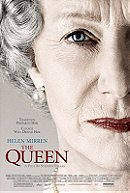
 1593
1593
 7
7
 7.3
7.3

